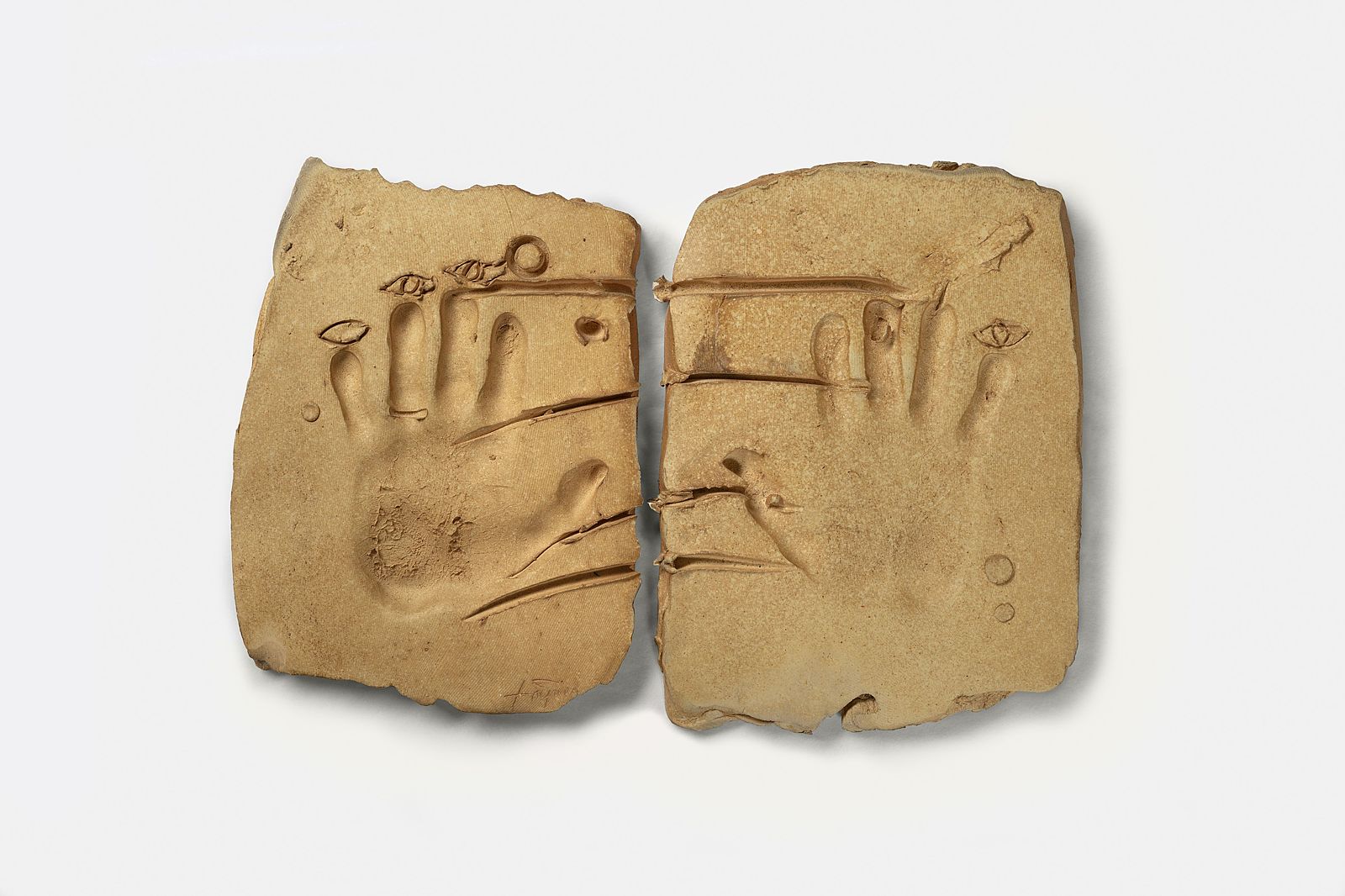Antoni Tàpies
Division into Two
Studiolo

Antoni Tàpies, Dues mans, 1983, The Lambrecht-Schadeberg Collection, © Comissió Tàpies/VG Bild-Kunst, Bonn 2022, Photo: Philipp Ottendörfer
Division into two provides the thematic starting point of the current Studiolo presentation, bringing works by Antoni Tàpies (1923–2012) together for the first time in this selection from the Lambrecht-Schadeberg Collection.
We are most familiar with the principle of two halves from ourselves. The human body mirrors itself symmetrically along its axis. Consequently, we possess most limbs and organs twice: eyes and ears, arms and hands, legs and feet. It seems only natural that this inherent symmetry permeates matter in artistic works as well.
Tàpies always regarded his own body as the first instance of experience and thus as vital for the production of images. For example, in the work “Dues Mans” (“Two Hands”, 1983), the artist's handprints are impressed into two clay tablets. Tàpies worked on his art using unconventional tools and materials, always involving his own body; repeatedly, there are traces and imprints of hands or feet. In the works “Dìptic” (“Diptych”, 1988) and “Jeroglífics” (“Hieroglyphics”, 1985), two halves of the image are positioned side by side. In “Dìptic”, five white strips of fabric, centrally glued over the seam in the painting like bandages, unite the halves to create a whole. The impression is one of vulnerability, of a torn and freshly mended pictorial body. In “Jeroglífics”, each half of the picture initially exists for itself, and symbols and forms run across the join in just a few places. But as a rule, Tàpies allows the multitude of signs to appear twice, once on each side: Feet, pairs of eyes or a face, grids, crosses and X-shapes, rows of numbers and equations, and finally a painted arm and a shirt sleeve that has actually been pasted on. The work resembles an unconscious image of his own body, dissolved into parts and yet united in the two halves.
Division into two is inherent in us. Tàpies visualizes this with his artworks; his hands and feet leave traces, and the symbolic eyes and ears reflect our own perception. In Tàpies’ work, “grasping” the world is a literally physical experience that we are able to discover for ourselves.
Curated by Ines Rüttinger